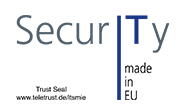asvin has developed a solution for secure fingerprinting and identification of IoT devices. It manages ID information using distributing ledger technology which is employed for bootstrapping, authentication and network management control services. Though asvin has developed a prototype with the innovative device fingerprinting solution and ID service, they need to be validated in an experiment under high scaling conditions. The results will be used to optimize the asvin solution stacks towards a market fit solution for high scale IoT deployments.

Innovation
The solution has following innovative elements:
- PuF – A cryptographic layer to create unique device IDs for the Identification of IoT assets in network application. The PUF takes advantage of submicron variations that occur naturally during semiconductor fabrication. Though the variations are minute they result in measurable electric properties. asvin uses SRAM-based PUFs for fingerprinting IoT devices. These hardware cell values, unique to each chip, result in random but repeatable patterns that are referred to as SRAM startup data. This SRAM startup data is utilized to generate device fingerprints, which is eventually used to create unique device IDs.
- DLT – A DLT based privacy-enhanced ID ledger is used to identify IoT devices by their PUF based fingerprints. The ledgers are set up on peer nodes in a private ethereum network, which are integrated by Hyperledger Besu. In the experiment, the decentralized ledgers will be set up and run as regular nodes in the private chain of the alastria foundation (Network B). The blockchain based storage of IDs provides the immutable representation of IoT device IDs based on unclonable device fingerprints.
- LO-CoAP-EAP – asvin uses a novel bootstrapping protocol called Low-Overhead CoAP-EAP (based on three Internet standards: Authentication, Authorization and Accounting (AAA) infrastructure, Extensible Authentication Protocol (EAP) and Constrained Application Protocol (CoAP). Boarding new devices to IoT management and control systems is based on this protocol stack to enable flexibility, networking technology independence, scalability and computing performance for trusted bootstrapping.
The experiment outcomes will support asvin in strengthening and optimizing the solution stack towards high scale operation. This will enable high applicability for trusted operations of large scale IoT infrastructure in connected smart environments such as city, industry, agriculture. Beyond the project, these outcomes could be reused by Internet developers’ communities. asvin is committed to open source principles and the values of NGI. By that, the experimental results and the sources of the solution stack will be published on asvin GitHub account under open source license.
Impact
The experiment will allow the asvin team to engage directly with US researchers. The EU – US partnership in the experiment will have following impacts.
- Strengthen and enlarge research and development capabilities with support of the US research community
- BRIDGES (US) testbed enables asvin to extend their quality management procedures and improve the platform performance
- Get access to US research networks and gain new knowledge sources while expanding the community we have created in Europe across the world
- Fit and strengthen the product and solution portfolio towards the requirements of US and global markets
- Expand the reach of the asvin open source solutions across atlantic from EU to US
- Prepare US market entrance by building initial relationships with US partners on a joint project
- Provide feedback and lessons learned on interaction of US Testbeds (BRIDGES) with european testbeds (Fed4Fire+ Virtual Wall) on creating cross atlantic experiments
- The scope, structure and planned outcomes of our project are particularly valuable to highlighting EU-US research collaboration:
- It will showcase and promote two research infrastructures important to EU-US researchers: BRIDGES and Fed4Fire+ Virtual Wall
- It will demonstrate the importance of industry-academia collaboration in expanding the state of the art in both conceptual architectures and solution market readiness across the Atlantic
- It will open the door for collaboration between other research communities and European entrepreneurs. The solution investigated by the project can be easily applied to new IoT use cases currently investigated by other teams at East Carolina University.






